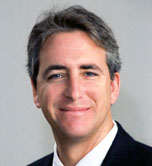As transportation advocates adapt their messaging to a new, more conservative Congress, the language of fiscal conservatism has become the mother tongue of the movement. Smart Growth America and the Bipartisan Policy Center have recently used the fiscal responsibility argument to urge policymakers to invest more strategically, especially as infrastructure budgets shrink.
Now the Brookings Institution jumps into the mix with its new report, “State Transportation Reform: Cut to Invest in Transportation to Deliver the Next Economy.” In it, author Robert Puentes, Senior Fellow at Brookings’ Metropolitan Policy Program, blames state fiscal crises on poor policymaking in addition to diminishing resources.
The Brookings report, along with the SGA analysis, focuses on state decision-making around transportation funding. Puentes says that the focus on poor strategy at the state level is really an “indictment at the federal level that the federal government has abdicated responsibility to the states and doesn’t have much oversight on how federal transportation dollars are spent at the state level.”
Despite the importance of the transportation sector, which employs more than 4 million people in this country, Puentes says the process for allocating resources is “sadly out-dated”, taking a “peanut butter” approach, spreading money evenly (and thinly) across a state, rather than making “strategic, targeted investments.”
He highlights the “recent dust-up over high speed rail” to illustrate two points. First, “states and governors are still in the driver’s seat when it comes to transportation decisionmaking and project selection.” And second, federal money often comes with “on-going maintenance demands are more than [states] want to bear.” Sort of like a free puppy, he says. But whether it’s operational costs or anything else, federal money does come to states with responsibilities attached, and the states should prove that they’re capable of spending those dollars wisely.
It comes down to picking good projects. Rather than just funding all the bridge projects that come their way, state officials should consider outcomes, performance measures, and economic impact. In an interview, he said that even when projects do get vetted through a set of criteria, it’s often the wrong criteria.
For example, Maryland’s new Intercounty Connector – “If you’re measuring throughput or velocity of vehicles,” he said, “that’s certainly something to measure, and that’s certainly something the Departments of Transportation are comfortable with. The point we’re trying to make is that you’ve got to tie spending to other measures of importance, and particularly in a time of economic strife you’ve got to tie it to measures of economic growth and competitiveness.”
He recommends running projects through a cost-benefit analysis and that the projects selected should be the ones that provide a “strict return on investment criteria.” That doesn’t mean projects should only be chosen if they turn a profit, though – if they help people get to work or reduce carbon emissions, that’s a positive return on investment.
The report recommends prioritizing repair over expansion, focusing on reducing oil dependency, and including social equity as a central goal. Puentes also recommends that state governments copy the Obama administration’s inter-agency partnerships and create “super secretariats” combining transportation, economic development, commerce, housing, land conservation, and other infrastructure such as water and sewer. California and Massachusetts already have them.
Puentes sees State Infrastructure Banks and public-private partnerships (P3s) as good ways to fund transportation projects. He emphasizes that P3s aren’t just concession deals like toll roads but also include transit-oriented development, where the private sector invests in neighborhoods served by transit.
Either way, he said, “Private corporations are ready to invest in U.S. infrastructure. These corporations are not waiting around. They see a market opportunity here – we’re kind of an emerging market to some of these places – but they’ll bypass the U.S. and go to Europe and other places that have the same amount of need.”
But Puentes acknowledges that P3s need to “balance the policy goals of a public agency with the private goals of profit-making, and those are not necessarily mutually exclusive.”
“We have to make sure this is not designed to only turn on that spigot of private money and let it all wash across the U.S.,” he said.






